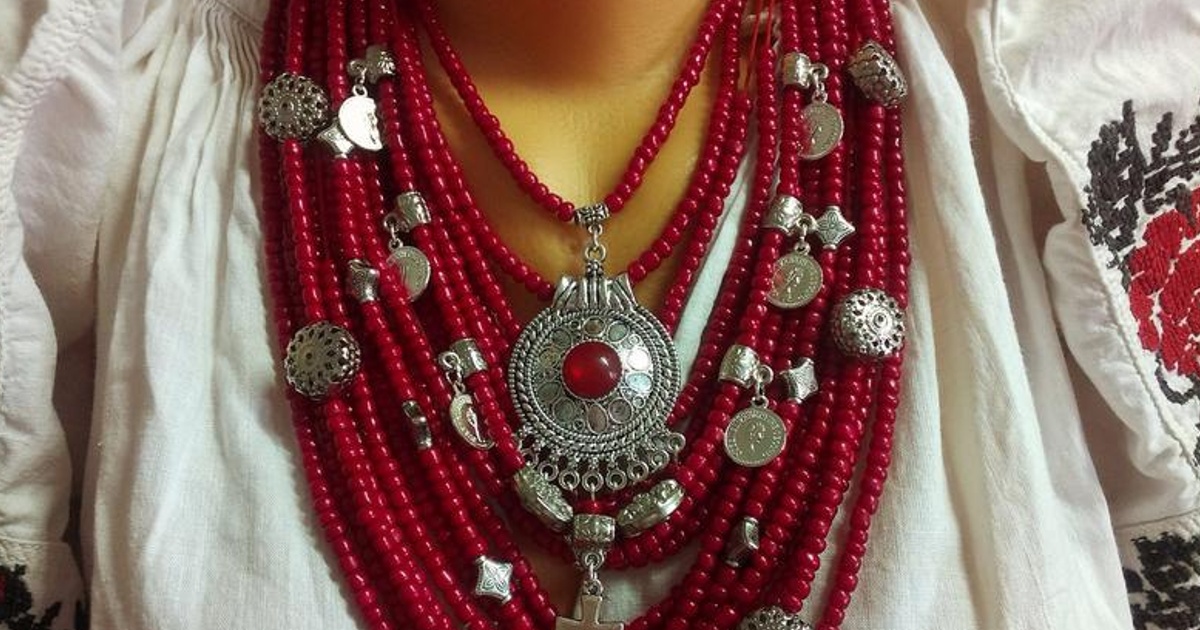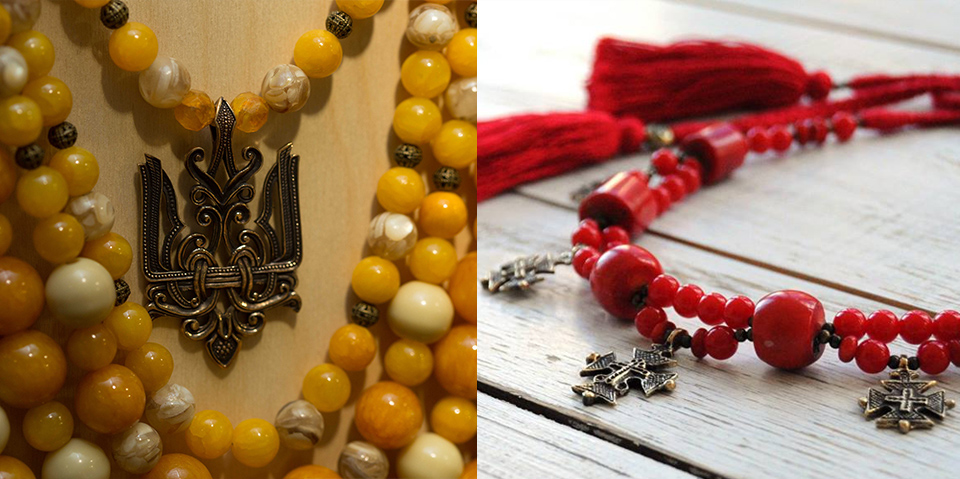The Ukrainian necklace, traditionally known as namysto, holds a prominent place within Ukrainian cultural heritage, functioning not merely as an ornamental accessory but as a significant symbol embedded with historical, social, and spiritual meanings. Its development and use reflect both regional diversity and the interplay of cultural influences throughout Ukraine’s history.

Namysto (spadok.org.ua)
Cultural Significance
Historically, the Ukrainian necklace has served multiple social and symbolic roles. It often indicated a wearer’s social status, marital condition, and regional identity. Namysto was traditionally worn by women, especially during festive occasions, weddings, and other rites of passage, where it symbolized femininity, prosperity, and protection. Beyond its decorative purpose, the necklace was believed to have apotropaic qualities—serving as a talisman to ward off evil spirits and safeguard the wearer’s well-being.
The namysto is integrally linked to Ukrainian folk costume and is frequently paired with traditional garments, reinforcing cultural identity and continuity. It also functions as a medium through which artisan skills, such as beadwork and metalwork, have been transmitted across generations.

Namysto (spadok.org.ua)
Varieties and Materials
Ukrainian necklaces exhibit considerable regional variation in terms of design, materials, and composition. The types of beads and adornments used reflect the availability of local resources and the influence of trade routes connecting Ukraine to broader Eurasian networks.
The most widespread material for beads includes glass, coral, amber, and metal. Glass beads became prominent from the 18th century onward, with mass production facilitating their broader use. Coral necklaces, often referred to as “red coral,” hold special value, particularly in western Ukraine, where they were imported from the Mediterranean and symbolized wealth and health. Amber, native to the Baltic region, was another valued material used primarily in northern Ukrainian areas.
Structurally, namysto could consist of single or multiple strands, sometimes layered or interspersed with metal elements like coins or pendants. The necklaces might be simple strands of uniformly shaped beads or complex compositions integrating carved elements and symbolic motifs.

Ukrainian necklaces (obarykada.com)
Symbolism and Artistic Traditions
The design elements and colors of Ukrainian necklaces carry layered meanings. Red beads, commonly coral or glass, symbolize life, health, and protection. Black beads might represent the earth or fertility, while white beads denote purity. The arrangement and number of beads could also have symbolic import, relating to folk cosmology or local customs.
In certain regions, bead embroidery—a technique incorporating beads into fabric—augmented the necklace’s symbolic function. Such embellishments aligned with broader ethnographic traditions of ornamentation in Ukrainian folk art.
Scholarly research emphasizes that the creation and use of namysto reflect an ethnom artistic tradition that blends utilitarian craft with aesthetic and symbolic expression. The necklace is a living artifact that captures the historical layering of Ukrainian cultural influences and the resilience of its folk art heritage.


